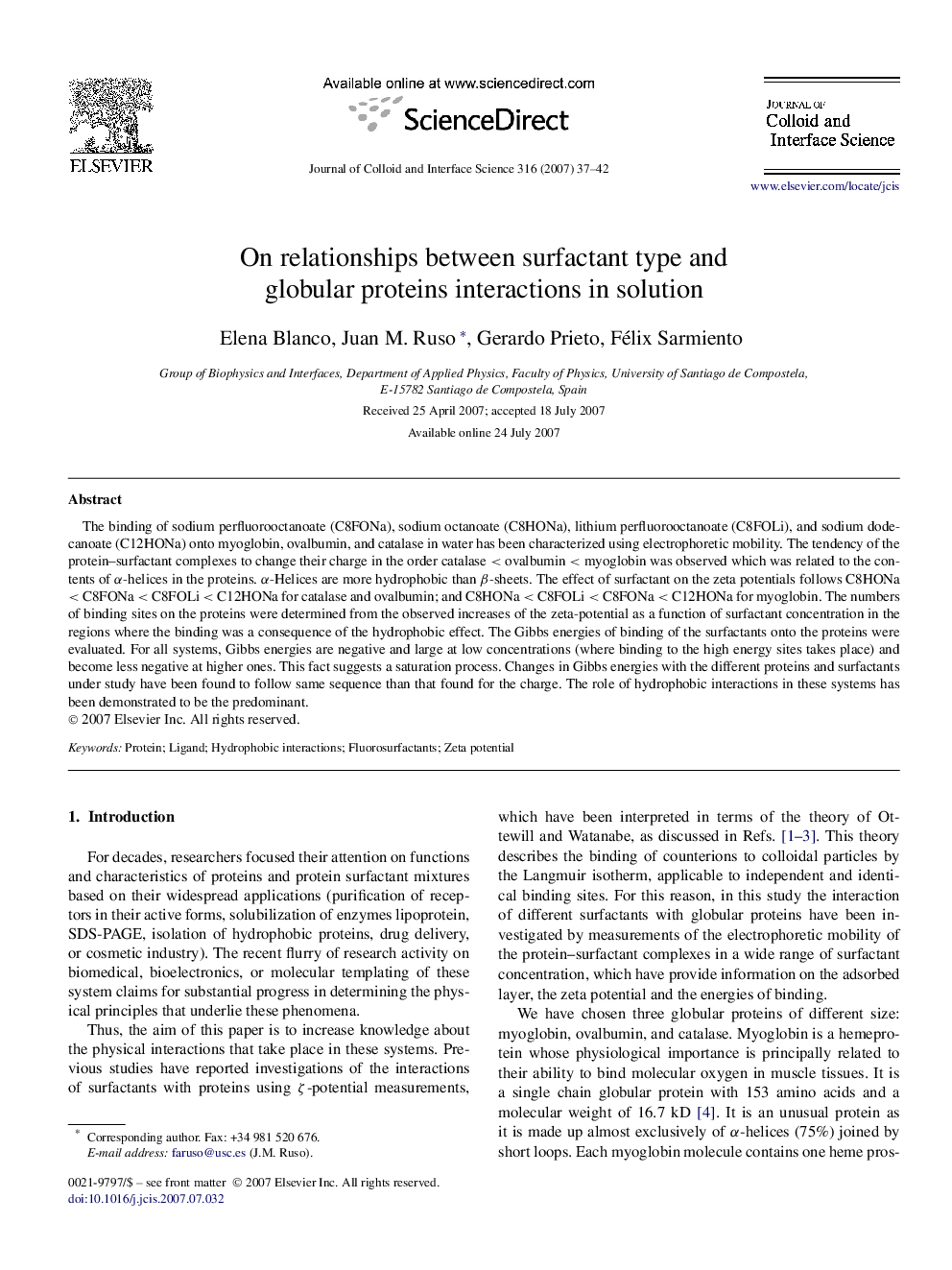| Article ID | Journal | Published Year | Pages | File Type |
|---|---|---|---|---|
| 611662 | Journal of Colloid and Interface Science | 2007 | 6 Pages |
The binding of sodium perfluorooctanoate (C8FONa), sodium octanoate (C8HONa), lithium perfluorooctanoate (C8FOLi), and sodium dodecanoate (C12HONa) onto myoglobin, ovalbumin, and catalase in water has been characterized using electrophoretic mobility. The tendency of the protein–surfactant complexes to change their charge in the order catalase < ovalbumin < myoglobin was observed which was related to the contents of α-helices in the proteins. α-Helices are more hydrophobic than β-sheets. The effect of surfactant on the zeta potentials follows C8HONa < C8FONa < C8FOLi < C12HONa for catalase and ovalbumin; and C8HONa < C8FOLi < C8FONa < C12HONa for myoglobin. The numbers of binding sites on the proteins were determined from the observed increases of the zeta-potential as a function of surfactant concentration in the regions where the binding was a consequence of the hydrophobic effect. The Gibbs energies of binding of the surfactants onto the proteins were evaluated. For all systems, Gibbs energies are negative and large at low concentrations (where binding to the high energy sites takes place) and become less negative at higher ones. This fact suggests a saturation process. Changes in Gibbs energies with the different proteins and surfactants under study have been found to follow same sequence than that found for the charge. The role of hydrophobic interactions in these systems has been demonstrated to be the predominant.
Graphical abstractFigure optionsDownload full-size imageDownload as PowerPoint slide
